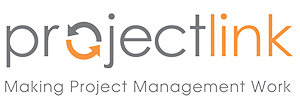Werner Meyer, founding director of ProjectLink, recently added "certified PDRI facilitator" to his list of qualifications and certifications. Meyer founded ProjectLink, a project management consultancy, 21 years ago and is still consulting today. He has a profound interest in project risk management and in researching failed and successful projects.
The abbreviation PDRI stands for the Project Definition Rating Index; it's a tool that was developed by the Construction Industry Institute (CII). Many capital projects struggle to ensure they have a good project definition. In essence, this means: Have project managers really defined the scope of a project well?
Says Meyer: "During the execution or after the execution of unsuccessful projects, a bad quality definition is often found to be one of the major contributors to the lack of success or difficulties experienced. Using the PDRI tool, we answer a set of questions regarding a project and we score the questions on a scale of one to five, based on how well each item is defined.
"The PDRI is mainly used for engineering and construction projects. Depending on the specific project you are dealing with, there are approximately 70 to 75 questions. A typical question might be something like: 'How well defined are the engineering drawings?' You can score this on a scale of one to five and the team can discuss it.
"What is quite important when doing the PDRI is to have a conversation between the project team members, to ensure the rating given to each line item is accurate and reflects what is actually happening on the project in terms of its definition.
"Once the PDRI is completed, a score is calculated; the lower the score, the better the project is defined. The PDRI score is out of 1 000, for example, when we are in late study phases for the project. We try to get scores that are between 150 and 250," says Meyer.
Another benefit of the PDRI is it can be applied in the various phases of the project life cycle, or what is sometimes called the FEL (front end loading) stages, so it can be used very early on. The PDRI can be repeated several times throughout the project; the initial PDRI can be conducted during the project concept phase, again in the pre-feasibility phase, and finally, in the feasibility phase.
Each time the PDRI is conducted, it highlights which areas of the project are not well defined. When the project team goes into the next phase, they can give special attention to the badly defined items from the previous phase, ensuring they spend enough time and effort to define those troublesome areas more clearly before moving forward.
"Essentially, that's what we get from the PDRI: the assurance that the project is well defined, which contributes to the probability of project success," concludes Meyer.
For more information on the PDRI tool and its benefits, contact ProjectLink today.
Share
